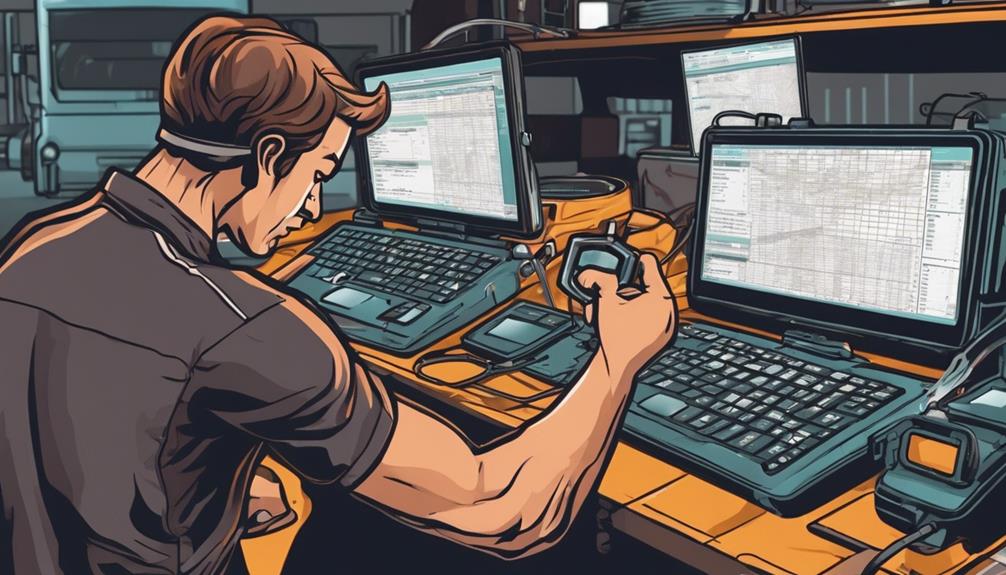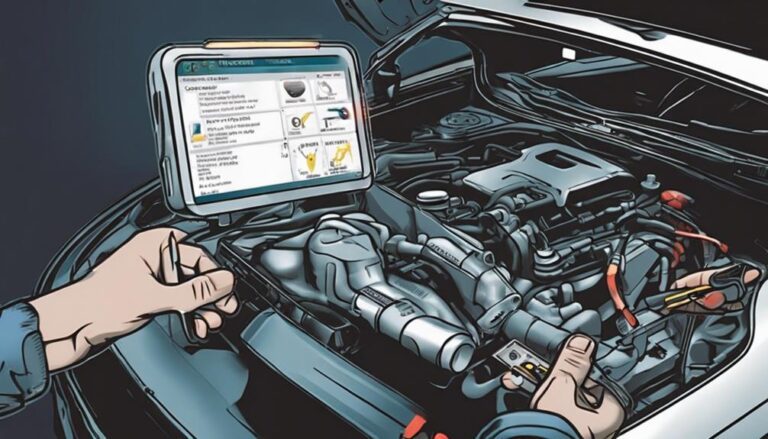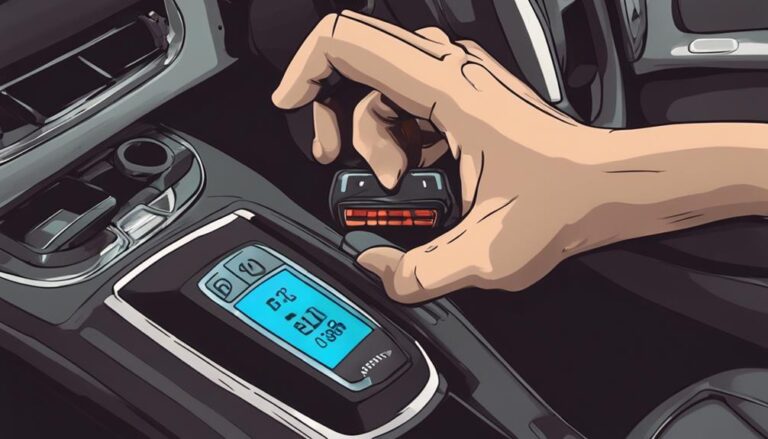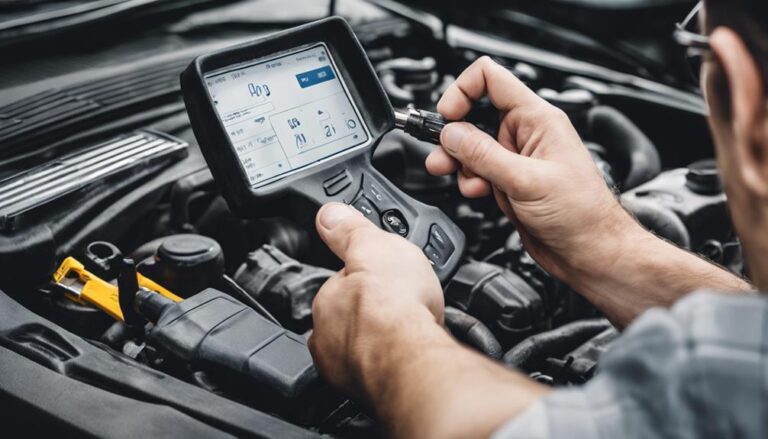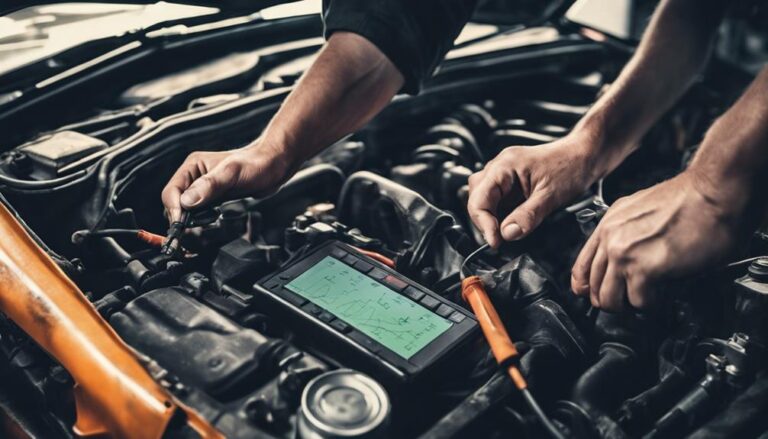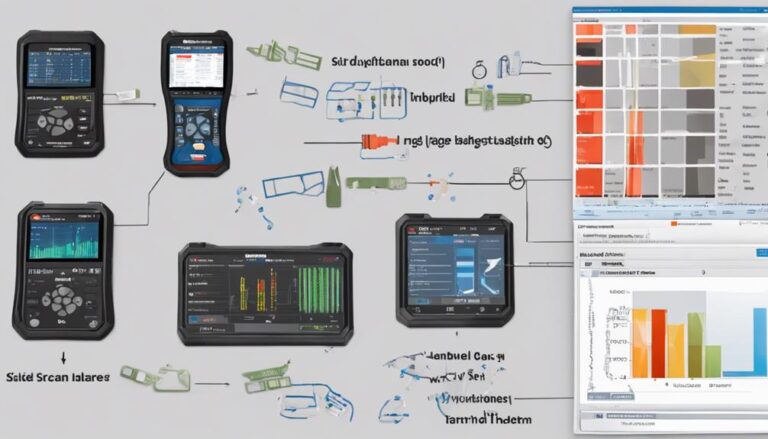What Do Check Engine Codes Mean for Car Repair?
When your check engine light comes on, it's like a cryptic message waiting to be deciphered, hinting at potential issues lurking under the hood of your car. Understanding what those check engine codes mean can be the key to saving you time and money on repairs.
But decoding these codes is just the first step; what lies beyond the surface might surprise you. Unraveling the mysteries of these codes could be the difference between a quick fix and a costly repair.
Key Takeaways
- Check Engine Light Codes pinpoint specific vehicle issues for accurate diagnosis.
- Understanding OBD II codes aids in identifying and addressing car system problems.
- Prompt action on highlighted codes prevents serious engine damage and costly repairs.
- Consulting professionals for repair recommendations based on deciphered codes is crucial for vehicle health.
Understanding Check Engine Light Diagnosis
When diagnosing the Check Engine Light, understanding Diagnostic Trouble Codes (DTCs) stored by the Engine Control Module (ECM) is essential for pinpointing vehicle system issues accurately. DTCs are like a language your car uses to communicate specific problems, represented by alphanumeric codes.
Each code corresponds to a particular malfunction in the engine or related systems. Effective troubleshooting tips involve using a code reader or scan tool to retrieve these codes from the ECM. Once you have the codes, consult a reliable source for error code interpretation, as this will guide you towards the root cause of the issue.
From engine misfires to fuel system problems and emission control issues, DTCs cover a broad spectrum of potential faults. By understanding and interpreting these codes correctly, you liberate yourself from the uncertainty of Check Engine Light mysteries and empower yourself to address car problems with confidence.
Importance of Check Engine Codes
Understanding Check Engine Codes is paramount for efficient vehicle diagnostics and maintenance. These codes serve as essential diagnostic tools, providing specific information about various system issues within your car. By utilizing Check Engine Codes, technicians can efficiently pinpoint the root cause of problems, enabling accurate diagnosis and targeted repairs. Different categories of codes, such as P, B, C, and U, indicate the specific systems involved, aiding in troubleshooting techniques.
Utilizing diagnostic tools to interpret these codes allows for a systematic approach to identifying and resolving issues promptly. Ignoring the Check Engine Codes can result in serious engine damage and potentially lead to costly repairs down the line. Therefore, staying informed about the importance of these codes and promptly addressing any issues they highlight is crucial for the overall health and longevity of your vehicle.
Deciphering OBD II Codes
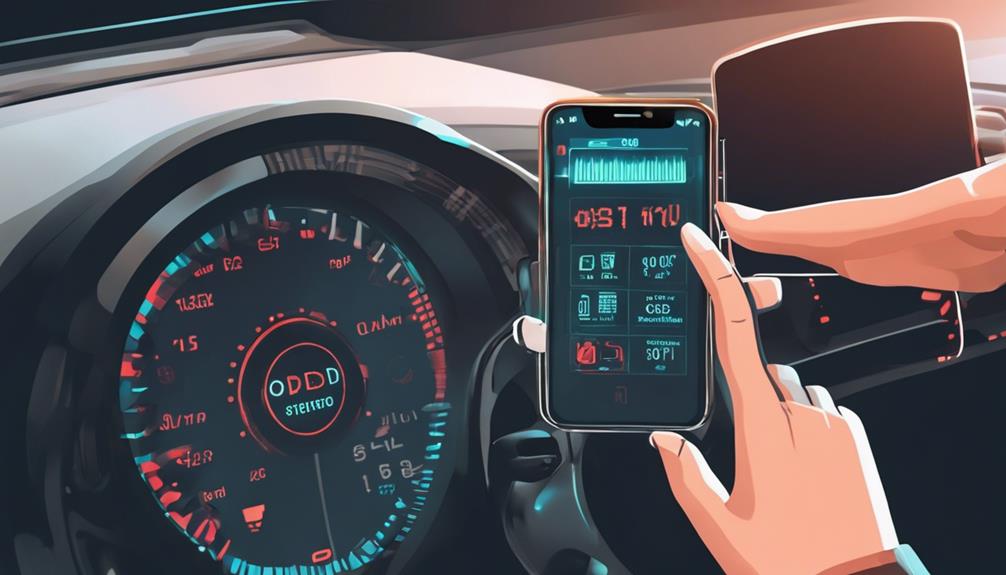
To effectively address vehicle issues, mastering the skill of deciphering OBD II codes is crucial for precise diagnostics and repair procedures. When it comes to interpreting these codes, keep in mind the following key points:
- Standardized Pattern: OBD II codes follow a standardized pattern with letters like P, B, C, U indicating different systems and digits specifying the issue.
- Second Digit Significance: Understanding the second digit in OBD II codes is crucial as it helps in identifying specific problems within a system.
- Resource Assistance: Online resources can assist in decoding specific fault codes for different engine types based on the OBD II system.
- Tool Varieties: OBD II scanners provide consumers with access to basic diagnostics, while professionals use advanced scanners for comprehensive error detection.
- Efficient Diagnosis: Deciphering OBD II codes is essential for efficient car diagnostics and repair processes.
Common Check Engine Code Meanings
Mastering the meanings of common check engine codes is essential for efficient car maintenance and repair. When troubleshooting misfire issues, a code like P0300 indicates random or multiple cylinder misfires, necessitating thorough inspection of ignition and fuel systems.
Addressing lean fuel mixtures is crucial, with a code such as P0171 signaling a lean condition in Bank 1, potentially pointing to issues within the fuel delivery system. Understanding codes like P0420, which relate to catalyst system efficiency problems, can help prevent costly repairs by identifying issues early.
Codes such as P0442 and P0455, indicating evaporative emission control system leaks, require varying levels of attention based on severity. By interpreting these common check engine codes accurately, you can efficiently diagnose and resolve problems in your vehicle, saving time and money on unnecessary repairs.
Stay informed to tackle issues promptly and keep your car running smoothly.
Action Steps for Check Engine Codes
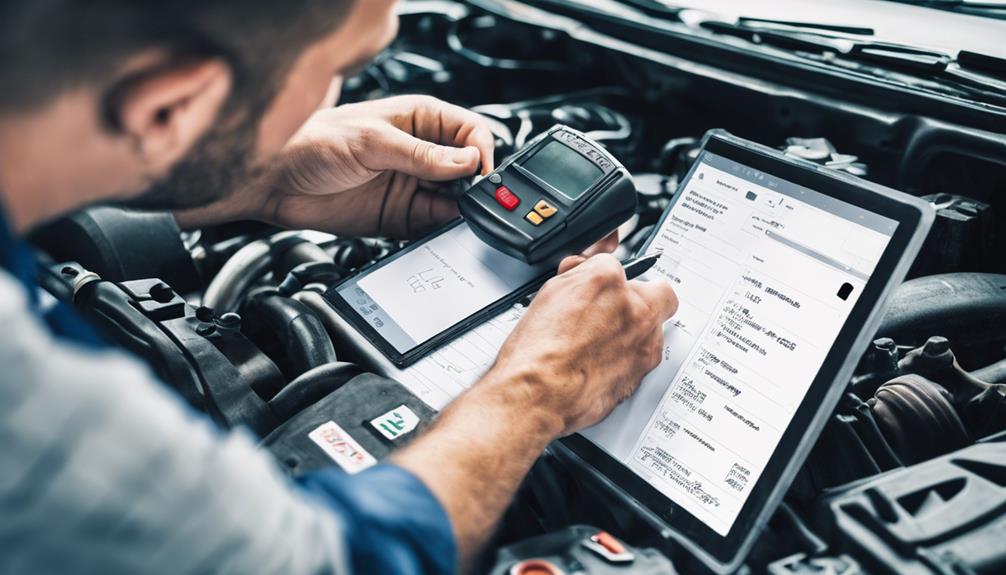
Taking prompt action upon receiving check engine codes is crucial for timely diagnosis and resolution of vehicle issues. When faced with this situation, follow these action steps to ensure efficient handling of the problem:
- Get a Diagnostic Scan: Use an OBD-II scanner to retrieve the specific trouble codes stored in your vehicle's computer system.
- Research the Codes: Look up the codes online or consult with a professional to understand what they signify.
- Address Immediate Concerns: If the code indicates a severe issue like low oil pressure or overheating, address it promptly.
- Consult a Technician: Seek advice from a qualified technician for repair recommendations based on the diagnostic process.
- Schedule Repairs: Once you have a clear understanding of the problem, schedule the necessary repairs to prevent further complications.
Frequently Asked Questions
Do I Need to Clear Check Engine Codes After Repair?
After repair, you should clear check engine codes. This step is crucial for the diagnostic process. It helps confirm the fix and allows the system to monitor for new issues. Technicians may do this to ensure accurate diagnostics.
What Is the Most Common Engine Code?
When dealing with engine codes, P0420 is often the one you'll see most frequently. It's a sign of catalytic converter trouble. Knowing this helps you tackle issues effectively, saving time and hassle in troubleshooting and repairs.
What Do Mechanics Do for a Check Engine Light?
When you see the check engine light, mechanics embark on a diagnostic process. They troubleshoot, calibrate sensors, and conduct emissions testing. By following precise steps, they pinpoint issues accurately to ensure your vehicle runs smoothly.
What Are the Different Types of Engine Codes?
Understanding the different types of engine codes guides you in pinpointing car troubles efficiently using diagnostic tools and OBD II scanners. These error codes help in troubleshooting specific issues within Powertrain, Body, Chassis, and Network Communications systems.
Conclusion
In conclusion, understanding and deciphering check engine codes is crucial for effective car repair.
Did you know that according to CarMD, the most common reason for a check engine light is a faulty oxygen sensor, accounting for 5.69% of all repairs?
By taking action promptly and consulting a technician when needed, you can ensure your vehicle remains in optimal condition and avoid costly repairs in the future.

